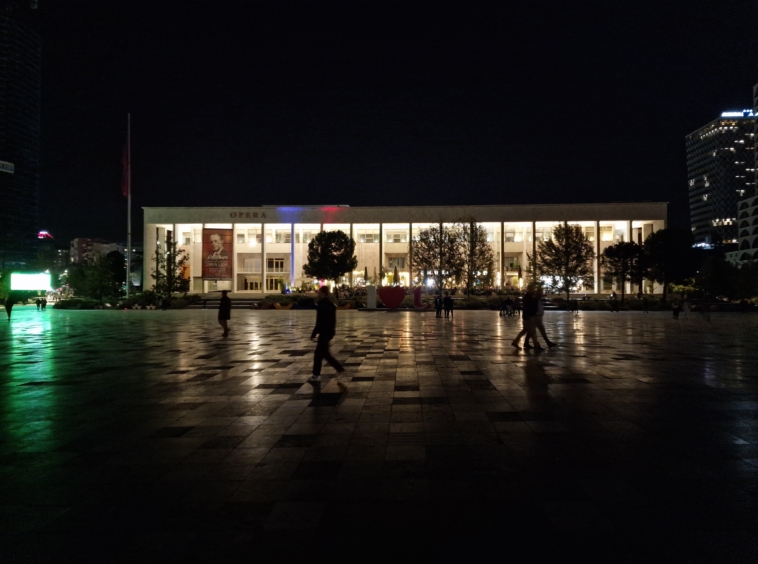Palace of Culture
Details
Updated on December 30, 2024 at 1:11 pmInformation
- Author: Soviet Architects (original design), continued by Eqerem Dobi, Sokrat Mosko, Anton Lufi, Besim Daja
- Year Built: 1959–1966
Description
The Palace of Culture (Pallati i Kulturës), prominently located in Skanderbeg Square, is a monumental structure that stands on the historical site of Tirana’s Old Bazaar. Constructed during a transformative period in Albania’s history, the building reflects a blend of Soviet influence and Albanian resilience, showcasing an architecture shaped by both collaboration and adversity.
Historical Context and Construction
Construction of the Palace of Culture began on June 3, 1959, and its foundation stone was laid in the presence of the former Soviet President Nikita Khrushchev, underscoring the close ties between Albania and the Soviet Union at the time. The original project was prepared by Soviet architects, heavily influenced by the grandeur of Soviet architecture, but diplomatic ties between the two countries were severed before the building’s completion.
After the departure of the Soviet specialists and the loss of their materials and sketches, Albanian architects and engineers, including Sokrat Mosko and Besim Daja, took over the project. Their perseverance and ingenuity ensured the continuation and eventual completion of the Palace, despite the sudden challenges.
Architectural Features
The Palace of Culture is a unique synthesis of Soviet monumentalism and local adaptations, with additional influences from Finnish and Italian architecture. Its design incorporates elements from notable buildings such as the Finnish Station in St. Petersburg and the Palace of Congresses in Rome.
- Façade and Exterior Design:
The building’s main façade is imposing and uniform, featuring a portico supported by twenty towering columns. These columns are emblematic of a modernist interpretation of socialist classicism, exuding both power and austerity. The structure’s clean lines and symmetry reflect the governing ideology of the time, emphasizing control and order. - Interior Spaces:
Inside, the Palace houses a variety of cultural and institutional facilities, each contributing to its role as a multifunctional civic hub. These include:- The National Theater of Opera and Ballet: A premier venue for performing arts in Albania.
- The National Library: A repository of Albania’s literary and cultural heritage.
- Conference Halls: Spaces for meetings and public events.
- Bookstores and Retail Spaces: Enhancing its cultural and community-oriented functions.
Cultural and Symbolic Significance
The Palace of Culture represents a transitional moment in Albania’s architectural and political history. Its design and construction reflect the influence of Soviet ideology and aesthetics, but its completion by local specialists highlights Albania’s growing independence and adaptability.
Moreover, the building’s location on the former site of the Old Bazaar—a vibrant marketplace that was central to Tirana’s early urban identity—symbolizes a shift from traditional commerce to a centralized cultural and political space.
Legacy
Today, the Palace of Culture remains a key landmark in Tirana, serving as both a historical monument and an active cultural center. Its combination of monumental architecture, multifunctional spaces, and central location ensures its continued relevance in the urban and cultural life of the capital.







